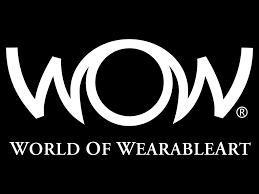Plastic Free July® is a global movement that aims to make people more aware of plastic pollution, and the things they can do to reduce it. This includes you! You can take the Plastic Free Challenge at home or at school to help get you started, check out some of our tips below, or borrow some of the awesome books listed below from your local library.
 Posters are available to download on plasticfreejuly.org/resources/posters/
Posters are available to download on plasticfreejuly.org/resources/posters/
What can I do at home?
- Talk to your family and get everyone on board with reducing plastic consumption
- Set out your ideas and suggestions on the fridge!
- Learn to bake! Home-baked snacks are way yummier (and cheaper) than bought ones anyway 🙂
- Think twice about single-use bottled water and fruit juices
- Use soap and shampoo bars instead of liquid soaps and shampoos
- Reduce the amount of things you buy, reuse what you have to, and recycle what you no longer need. Think to yourself before you buy “Do I really need this?”
- Take better care of your clothes, swap with friends, or get excited about hand-me-downs! Did you know that many of our clothes contain plastics like polyester, nylon, acrylic and polyamide? In fact most new fabrics are made of plastic – up to 64% of them. The thing is, every time we wash these materials they shed millions of plastic microfibres into our drains which ultimately end up in our waterways, lakes and oceans.
What can I do at School?
- Try to bring people together and create a team to look at how your school can reduce plastic consumption.
- Get both students and teachers on board, you never know who might be concerned!
- Start small by looking at the simple changes you can make. For example, take your lunch to school in a reusable container and bring reusable cutlery
- Try to empower others by sharing positive solutions rather than just identifying the problems!
“As a future guardian of the planet, you can say no to plastic. Your actions, however small, can make a big difference every day. Are you up to the challenge?” — Aubre Andrus, “The Plastic Problem“
“Plastic Planet offers young readers a non-alarmist introduction to Earth’s plastic crisis. Plastic pollution is now found in every environment on Earth, from the deepest oceans to the driest deserts and the most remote ice sheets. Plastic Planet offers readers aged 8 and up a look at plastic through the ages, exploring what it is, how it’s made and how we have become so dependent on it in a single-use, disposable world. It highlights the social inequality of plastic pollution and explores how plastic has become a widespread and dangerous pollutant that is inextricably linked to climate change. The book looks ahead to possible solutions to our plastic crisis, from global changes such as changing people’s mindsets, to innovations such as compostable plastics, to practical solutions such as recycling and bottle return schemes.” (Catalogue)
Kids vs. plastic : ditch the straw and find the pollution solution to bottles, bags, and other single-use plastics : how you can be a waste warrior! / Beer, Julie
“Jam-packed with surprising information about plastic’s effect on the environment, plus loads of practical ways kids can cut down on their plastic footprint, this is the kids guide to being part of the pollution solution!”–Provided by publisher.” (Catalogue)
The plastic problem : 60 small ways to reduce waste and save the Earth / Andrus, Aubre
“Look around you–plastic is everywhere! It’s in your shoes, pens, toothbrush, car, toys, TV, water bottles, food packaging… It’s almost impossible to get through one day without using it. And it’s creating major problems for our world, our oceans, our animals and marine life, and ourselves. In The Plastic Problem, from the team that brought you 101 Small Ways to Save the World, you’ll learn how to become a ‘plastic patroller’ instead of a plastic polluter by learning about the easy ways you can cut plastic out of your life. The simple actions found in this practical guide will help you protect our world and inspire your friends and family to do the same. ” (Catalogue, abridged)
Kids fight plastic / Dorey, Martin
“Have you got 2 minutes? That’s all the time it takes to become a #2minutesuperhero. Plastic is everywhere. It is in the rivers and it is in the sea. We need superheroes to fight plastic and help save our oceans.” (Catalogue)












